Author :Balraj Puri
Publisher : Oriental Longman Private Ltd. 2008, New Delhi
Price: Rs.350
Pages : 158
Reviewer: Khairunnisa Aga
“Kashmir Insurgency and After” is a rich empirical account that examines the trajectory of Democracy, Autonomy and Human Rights over a period of time, to portray a complex picture of alienation, discontent, and insurgency in the state of Jammu and Kashmir. It supplicates definitive statement of possibilities in ideas, action and politics to find out settlement to the problem. The nine chapters of the book has succinctly analyzed the Kashmir conflict and rationally examined different elements of the problem.
The book begins with an introduction of the political milieu that emerged on time of independence and partition of India and sets the context for the forthcoming chapters. These chapters trace the historical antecedents of the political development of the state. The author analyses the state of mind of Maharaja of Kashmir, who was ductile towards having his kingdom, independent of both India and Pakistan. The book argues that Muslims of Kashmir and their leaders were observed to be away from communal polarization of the Sub-continent. This argument is rooted in the analysis of Kashmiri identity, which according to the book is so dear to Kashmiri people that made them to welcome Indian Army in order to clean state of tribal invaders, who were considered a threat to their very identity and honor.
The book highlights different ethno-religious or sub-national elements in the state of Jammu and Kashmir. Taking note of regional aspirations of Jammu, which before 1947 was power center of the state, ends up at receiving end of land reform act of the National Conference, hence gives rise to regional tension. It is also not to be confused merely with Hindu problem but the desire of non-Kashmiri’s to get rid of what they call ‘Kashmir Raj’.
In Jammu region, ethnic identities like Dogri, Gujar, Pahari and Punjabi, belong to same family of languages as well as caste cutting across religious identities. The book mentions Poonch in light of ‘armed revolt’ and highlights local nationalism there of the area. Similarly, the book addresses dual identity of Ladakh and Kargil that is religious and regional in nature, fairly.
However, to understand issue in more comprehensive manner, the book explores ‘Uniqueness of Kashmir’, it is argued that geographically compact and culturally homogenous, Kashmir, fought feudal system and monarchy, enthusiastically. It has a unique civilization and the 5000 years old history is amalgamation of Buddhist, Hindu and Islamic Mysticism. People who came from Arabia, Iran, Afghanistan, Turkistan, mixed well with Kashmiri culture.
The other thing, which gives uniqueness to Kashmir according to the book, is Dardic language. The book argues that the cut-off point in history of Kashmir is not Islam, as often regarded, but the change over from Kashmir to Non-Kashmiri rule. However, distinct Identities in Pakistan administered part of the state that includes Mirpuri, Gilgit and Baltistan is discussed in later part of this book.
Yet, the book throws light on the circumstances under which a Muslim-majority with a Hindu ruler, State acceded to India on October 1947. However, Maharaja was hesitant to any such accession. While, on the other hand the fascinating stand of Pakistani leaders to respect Sovereign Rights of the Princes, was also giving Maharaja a hope to opt for an independent path.
The book states that loyal Hindu leaders in Jammu along with Muslim Conference who urged Maharaja to declare his State to be independent and establish a separate constituent assembly supported Maharaja. Therefore, anyone who was pro-Indian was considered anti-Hindu and anti-national. But soon after communal tension was penetrating from neighboring Punjab into Jammu, Muslim Conference asked for accession to Pakistan only on the terms of internal autonomy. Therefore the State had ‘Stand Still agreement’ with Pakistan. India however insisted on prior negotiations with J & K government, which was not responded till the time Tribal invaded the State.
Moreover, The book talks about internationalization of Kashmir dispute and manipulations of Super Powers as well. Security Council of United Nations mandated for the right to plebiscite to people of Jammu and Kashmir, according to author the US-Pakistan military pact and Sino-Pakistan friendship, made India’s stand harder on Kashmir. It had almost become part of Cold War Politics and gave stimulus to triangular Kashmir problem.
The book also talks about uncertainty and clashes of identity, in relations of Kashmir with Indian Dominion, as Maharaja and NC both considered the terms of accession would remain unchanged. However, the psyche of people was left to uncertain condition. The book very rationally states that as a reason behind preventing people of Kashmir to identify with India.
Yet, the Population of Jammu was not happy and they were in feeling of deprivation as the promise of regional autonomy under Delhi Agreement were unfulfilled, which provided autonomy to the State within India and regional autonomies within the state. But Jana Sangh and The Hindu Mahasabha rejected it and called for full accession to India.
Furthermore, the book analyses the Article 370 of the Indian constitution, which governs the relation of the state with center and also limits the Parliament’s power to make laws for J& K in union and concurrent list. The book argues that special status of J & K was not granted by government of India, but was sanctioned by provisions of the Government of India act 1935, Indian Independence act of 1947, Provisional Constitution and Instrument of Accession. Therefore Constituent Assembly and its successor Parliament had no right to abrogate or modify it.
However, the book puts forward the argument that due to Sheikh Abdullah’s harder stand, he was dismissed from power in 1953 that was restored in 1964. After Nehru’s death same year, the successor governments gave more importance to constitutional integration than emotional integration.
According to 1975, Kashmir Accord, many changes were brought to relation of J & K state with center, Article 356 and 357 were made applicable to the state and nomenclature of head of state and government was changed. The book argues that the creation of Bangladesh also affected Kashmir issue. Sheikh Abdullah lost power of bargain with center. Resulting, the Kashmir accord brought anxiety to Kashmiri youth.
The book argues that one more dismissal of government of J&K by New Delhi, bigoted policies of Governor of the state Jagmohan, paired with disorganized leadership qualities of Farooq Abdullah, left a vacuum in Kashmir, which was filled by fundamental and secessionist forces. The book maintain that a little constructive has been done to make Kashmir as an integral part of India and much energy has been spent on constitutional integration.
Furthermore, the soviet influence on Sheikh Abdullah’s mind is clearly evaluated was exhibited when he became supreme leader of his party with unchecked political power and a tightly controlled administration in 1947. The monopoly of single party system created apprehension in other sections of the state. The author says on pleading this to Nehru, he was told that Kashmir policy of India revolves round Sheikh Abdullah, and national interest was more important than democracy. Therefore opposition parties were not allowed to flourish, this way people have been deprived of their democratic rights.
Afterward, many national parties extending their activities to the state especially anti-Sheikh Abdullah camp was receiving strength and Muslim United Front was a result of this phenomena.
Furthermore, the book has very extensively explored the basis of transformation of alienation into insurgency, People of Ladakh were discontent for lack of representation in government and Jammu was unhappy with discriminations and Kashmir valley was turning anti-government sentiment into anti-India sentiment, the leader of this time was not addressing grievances of his people.
According to the author, appointment of the Governor Jagmohan, with his anti Kashmiri policies, nurtured militancy. The people of Kashmir were on streets with slogan of Azadi, like never before. It was no longer a fight between security forces but gradually took shape of a total insurgency.
The book has also discussed the Pundits of Kashmir, who migrated to Jammu and other parts of India, after they felt threatened. However, some people made efforts from both the communities to avoid this mass migration but failed as Governors machinery was facilitating for it, as per the author.
To reassert Kashmiriyat, the book articulates that JKLF was formed, its chief Amanullah Khan rejected merger with Pakistan, due to which this organization was stopped aid and arms that resulted in inter-militant gang clashes between Pro-Pakistan and Pro-Independence militants.
Moreover, the book examines the Human right voilations, which insurgency brought to the global focus. The law enforcing agencies were excessively using brutal force against civilians. There was no accountability for security forces, which were charged of wrongful confinement, manhandling, and indiscriminate firing in residential areas, custodial killings, molestation and gang rapes. The grave violation of Human Rights was taking place from Militant’s side too. Media persons were being tortured, officials were being targeted, kidnapped and rapes were reported too. Non-Muslims communities were now at their target directly. Fidayeen Attacks were taking place.
According to the book, after some time there was a new shift in thinking of political leaders, who now were talking of governance and development, apart from settlement of Kashmir Issue. There was a remarkable deterioration in Militancy after 9/11 too. However, it did not end alienation. Recognition of significance of Peace Process, by all three parties to dispute consequently resulted in; India and Pakistan to take measures for confidence building, dialogue between two countries and people of Kashmir.
The author believes that such vast diversities as Jammu and Kashmir can be held together only on the basis of decentralization and federalism and a final, durable solution to the Kashmir problem is needed. Kashmir’s aspiration for identity and freedom, which initially motivated it to accede to Indian union, was frustrated due to a number of reasons. The uprising of Kashmir, significantly, not only synchronized with but also drew its inspiration from these developments.
The author is of the opinion that government of India must allow International Human Rights organizations to monitor Kashmir, similarly State Human Rights Commission needs to be strengthened and made fully autonomous. The Jurisdiction of National Human Rights Commission must be extended to J & K, not only because India has become largest democracy in world but also being elected as member of Human Rights Council of United Nations. According to the author, India is on trial in Kashmir, where it can honor its pledge and justify its International status.
Author is Research Scholar at Gulf Studies, Jamia Millia Islamia, New Delhi.





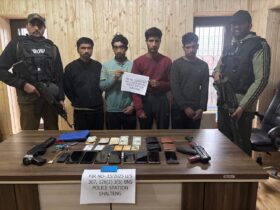

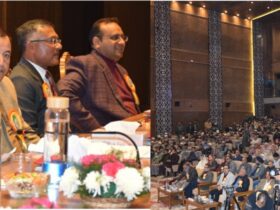



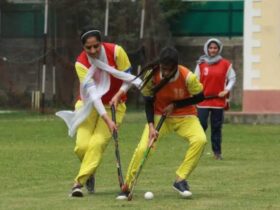

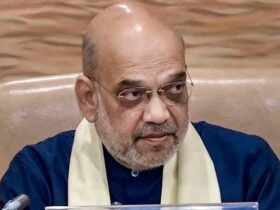


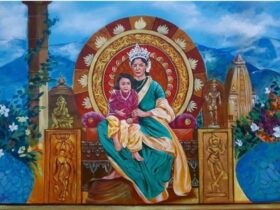
Leave a Reply